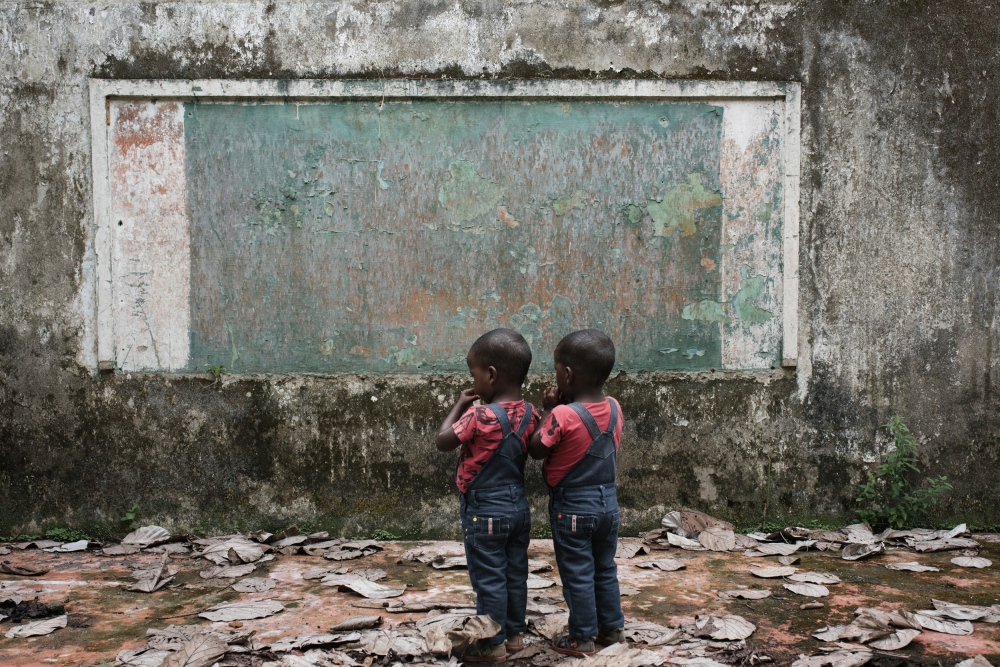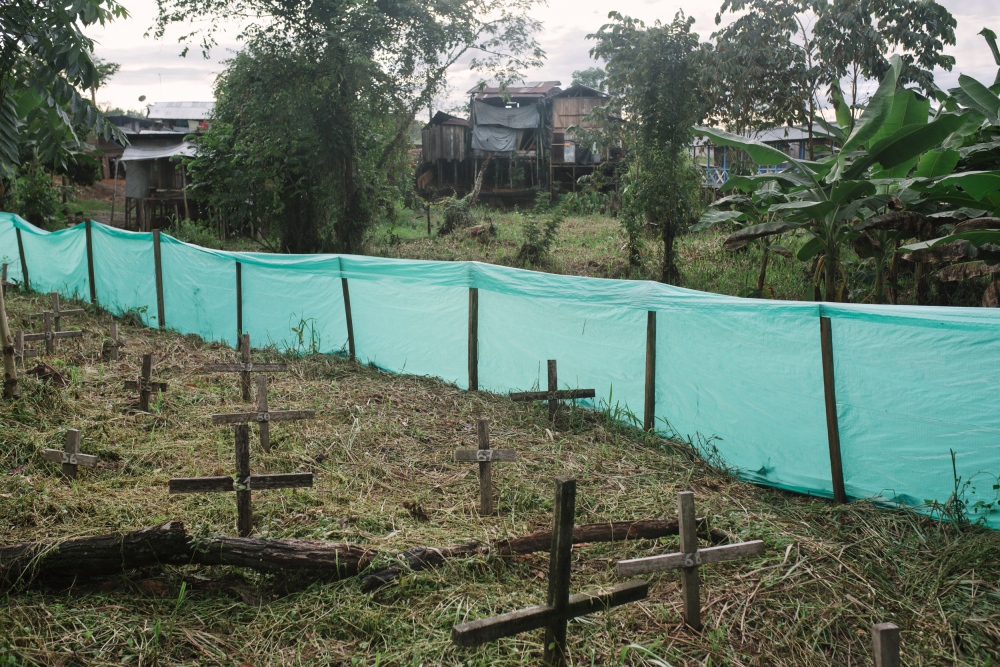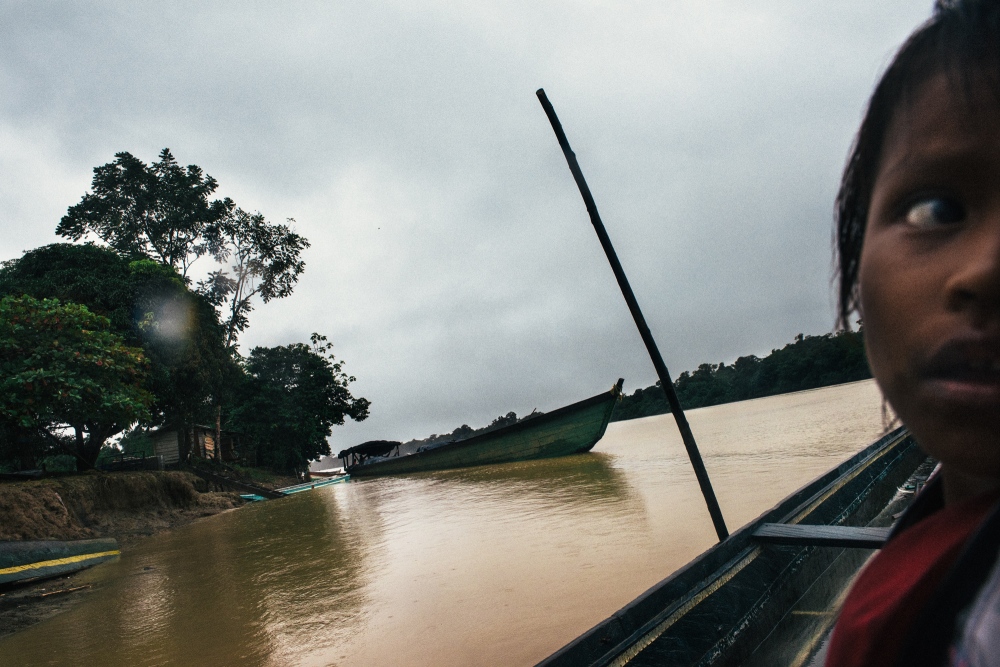El 2 de Mayo de 2002 el pueblo de Viejo Bellavista, Chocó fue destruido durante un enfrentamiento entre el frente 57 de las FARC y el bloque Elmer Cardenas de las AUC (Autodefensas Unidas de Colombia). Cuando una pipeta de gas lanzada por las FARC-EP calló en el techo de la iglesia en donde civiles buscaban refugio ochenta personas resultaron heridas y otras ciento diecinueve murieron, mas de la mitad de ellas niños. Aunque existe un amplio consenso respecto a que las FARC-EP fueron las principales responsables de la masacre, el Estado Colombiano también fue encontrado administrativamente culpable ya que omitió varias alertas a cerca de la presencia de grupos armados en la región días antes de los hechos.
La tragedia pasó a la historia como uno de los capítulos mas cruentos de la historia del conflicto armado en Colombia y se le dio el nombre de “La masacre de Bojayá”, el nombre del municipio donde se encuentra Bellavista. La masacre sucedió ad portas de las elecciones presidencial del 26 de Mayo de 2002, dándole un empujón a la candidatura de Alvaro Uribe Velez, quien ganarían por un amplio margen con una plataforma que no le apostaba a la paz y proponía una lucha directa contra las FARC-EP.
El pueblo fue reconstruido rió arriba durante el gobierno de Uribe, sin embargo, las gran mayoría de los habitantes del pueblos se desplazaron a Quibdó u otras ciudades, con lo que el tejido social del pueblo quedó completamente destruido.
Catorce años después, el 2 de octubre de 2016, Bojayá votó 96% a favor del “SI’ en el plebiscito sobre los acuerdos de paz. Fue una de las tasas de aprobación más altas del país y el pueblo se convirtió en un ejemplo de la Colombia Rural que había sufrido la guerra y estaba lista para decirle si a los acuerdos y a la paz. Aunque el “No” gano el plebiscito por un pequeño margen, un relativo clima de paz y tranquilidad seguía en píe en Bojayá, civiles y FARC-EP en los días luego de la derrota de los acuerdos en las urnas. Muestra de esto fue la vigilia por la paz organizada por el frente 57 de las FARC-EP el 31 de octubre en las cercanías del pueblo de Pogue. La vigilia, que fue convocada por la guerrilla como gesto de buena voluntad cuando el cese al fuego bilateral tenia como fecha limite el mismo 31 de octubre, contó con la asistencia de alrededor de doscientas personas.
Alrededor de un mes y medio después del plebiscito, la segunda versión de los acuerdos fue aprobada por el Congreso de la República. Es aun incierto si el post conflicto solventará o no lo problemas que han afectado a la región por décadas.
Noviembre de 2016.
The region of Bojaya is part of the Department of Choco and is located in the Northwest part of the Colombia. Next to the Atrato river, populated by a dense tropical jungle and home to various Indigena communities, as well as one of the largest Afro-Colombian populations in the country. Beginning with its´ history of slavery, Choco has since been disenfranchised and left aside by the centralist Colombian government; the gap between the rural and ruling elite groups has always been wide. This and its remote and isolated location have caused structural problems that have affected the region for decades. It is the poorest department of the country, has one of the highest rates of informality and unemployment, and corruption undermines the legitimacy and efficiency of local authorities towards the government.
New Bellavista is the main town in Bojaya, it sits on the bank of the Atrato river, a source of life for its’ communities and an important part of the way locals live, from fishing to traditional mining. At the same time, the Atrato has brought troubles to the region. It is a hotspot for illegal mining and is a strategic location for drug and weapon trafficking, an entry point to Central America and a connection route between the two oceans.
On May 2nd, 2002 Old Bellavista was destroyed during a combat between the 57th front of the FARC (Revolutionary Armed Forces of Colombia), that controlled the town at the time, and the AUC (Autodefensas Unidas de Colombia) paramilitary forces. The FARC launched an improvised gas cylinder mortar that landed in the town church where civilians were taking shelter. The structure was one of the few made out of concrete and it gave a sense of protection to the villagers. Ninety-eight people were wounded and anywhere from 74 to 119 civilians died in the attack, over half of them children.
By a wide consensus, the FARC was the main responsible of the massacre, however, the Colombian state was also found guilty. The Administrative Tribunal of the Choco region found that the Colombian nation was administratively guilty of omitting various warnings about the presence of armed groups in the region days before the massacre.
Over a decade after the massacre, on October 2nd, 2016, 96% of Bojaya residents voted “Yes” during a nation wide referendum in support of the peace agreement negotiated between the FARC and the government. It was one of the highest approval rates in the country and the town became an example of the rural Colombia that suffered the atrocities of war and was ready to say yes to peace and in hopes of a post conflict that could bring change.
Although the “No” won by a razor thin margin setting a climate of uncertainty over the future of the peace process, a new agreement that included changes and precessions the “No” promotors asked for, was signed a month on November 24. As villagers feel confident in building new homes and planting new crops in some regions of the Atrato, it will be how thoroughly the agreements are implemented what will solve or not issues that have affected Bojaya and the Choco region for decades.



























